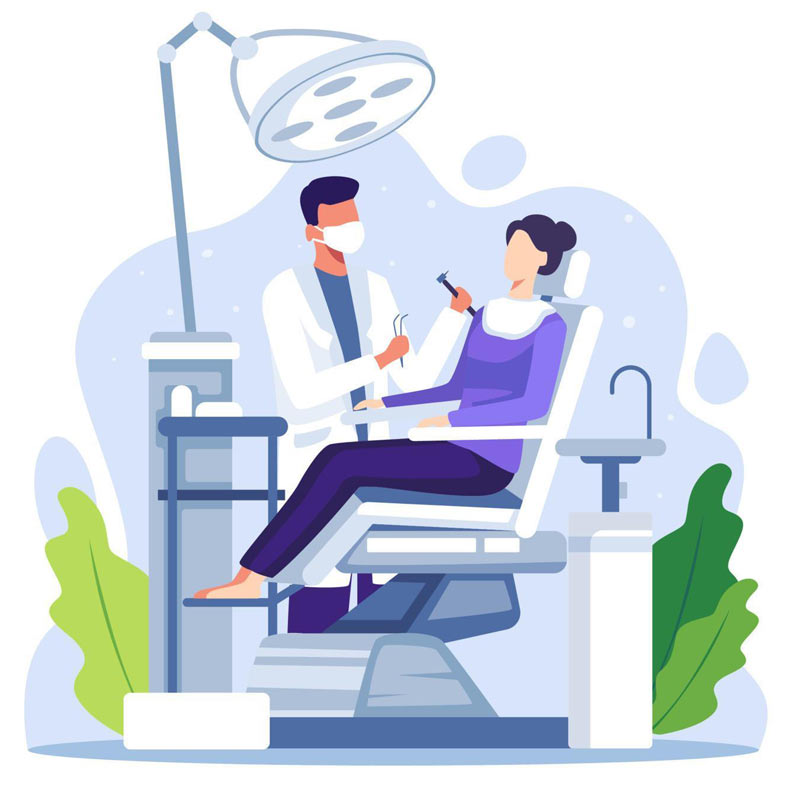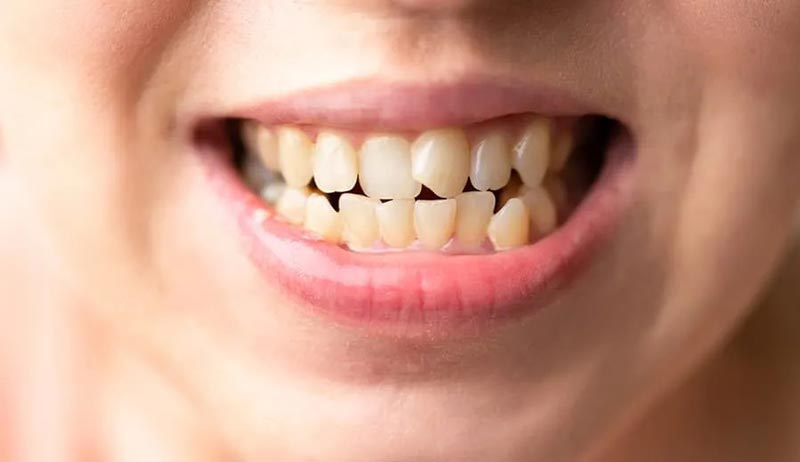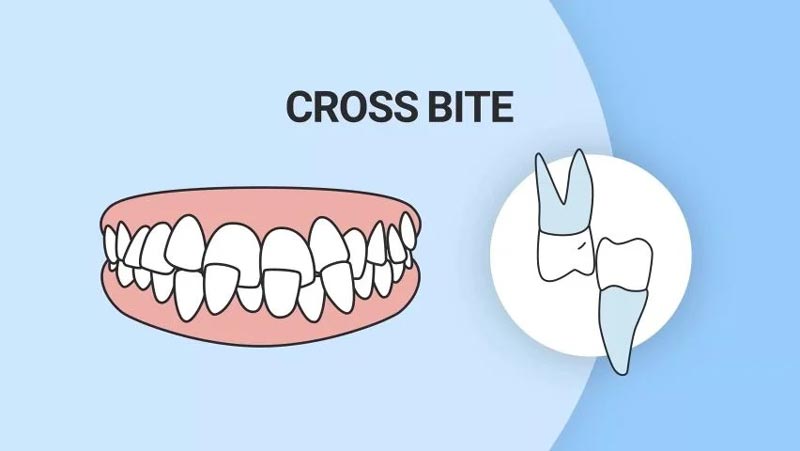Parenting involves careful attention to every aspect of a child’s health, including their dental wellness. Crossbite may directly influence more than just the smile; it may also affect the facial development and oral health of a developing child. We want parents to be able to understand the nature of crossbites in children. They should know what it is, how they form, and what effective treatment options are available. We aim to educate parents so they can support their child’s dental health effectively. For treating crossbite in kids, trust the best dentist in Langley at Langley Dental Group.

What is a Crossbite?
Crossbites are usually classified into two major types, both affecting different parts of the mouth, anterior and posterior. Anterior crossbite occurs when the lower teeth are positioned in front of the upper teeth during normal biting. The posterior crossbite occurs when the upper teeth or lower teeth at the back of the mouth crossbite on one side but not on the other. Usually, in biting, the upper teeth are supposed to be on the outside of the lower teeth.
Reversing this natural interrelationship to form a crossbite can lead to a variety of oral health issues, affecting overall dental health and wellness. This is so important because the initial step towards effective treatment is the understanding of the problem and the specific issues and signs of misalignment. Therefore, identification and correction are crucial steps that pave the way for proper intervention, ensuring the correction and maintenance of oral health.
- Posterior Crossbite:
It is a condition of dental misalignment where the upper back teeth of a child become placed inside the lower back teeth. This may mainly affect the facial structure. If not treated, a crossbite can cause noticeable unevenness in the face over time. This type of misalignment can change how the jaw grows, which might affect how noticeable the cheekbones are. This can result in noticeable changes in facial structure that may require more complex interventions later.
Such developmental influences can change the shape of the mouth and affect how well it works, such as chewing and jaw movements. It’s crucial to identify and treat a posterior crossbite early to reduce its potential long-term impact on a child’s facial and dental health. For addressing crossbite in kids, consult the cosmetic dentist in Langley who specializes in pediatric dental care.
Read More: Emergency Dentist in Langley

- Anterior Crossbite:
This is where one or several of a child’s upper front teeth lie behind the lower front teeth, appearing to be underbite. This degree of misalignment significantly impedes the everyday use and look of the front teeth. It affects crucial oral functions, changing the way a child bites and chews, leading to difficulties in correctly chewing food. Since the front teeth are apparent, an anterior crossbite can change a child’s smile. This might also lower the child’s confidence and social engagement. Quick treatment is essential for fixing the alignment. It assures that the child not only gets to enjoy the functional benefits associated with properly aligned teeth but also acquires confidence and a healthy smile.
This is why it’s so important to address these types of crossbites early on. Identifying a crossbite may prevent the facial and oral functional consequences in the long term. Early correction of a crossbite may have a severe effect on proper growth toward jaw development and teeth alignment functions. This will not only enhance the child’s ability to carry out essential functions, such as chewing and talking, but also stop severe dental issues that might need more complex treatments later on. A proper diagnosis and timely treatment are significant for the overall health and well-being of a child.
Related Articles: Orthodontics for Children
Book Your Child’s Dental Assessment Today
Early diagnosis makes treatment easier and more effective. Book an appointment at My Dentist Langley to check your child’s bite and get expert guidance on the best treatment options.
Causes of Crossbite in Children
The development of a crossbite in a child is caused by the following:
- Genetics: The structure of the jaw, like many other physical features, can be inherited. A child whose parents, one or both, have a crossbite or other orthodontic problems is disposed to have the same problem.
- Delayed loss of baby teeth: If the baby teeth are retained for longer than required in the mouth, there will be an interruption in the standard placing in position of the permanent teeth at the time of their eruption; therefore, the child would be subjected to crossbites.
- Prolonged thumb sucking and pacifier use: The shape of the jaw and position of the teeth changed considerably with the sustained habit of thumb sucking and using a pacifier after three years of age, which led to the development of the crossbite.
Understanding the cause of the crossbite can help prevent or reduce its effects through early detection and treatment. For treating crossbite in kids, visit the pediatric dentist in Langley at Langley Dental Group. Our specialized team provides expert care tailored to children’s dental needs, ensuring effective treatment and a comfortable experience for your child.
Read More: Sedation Dentistry in Langley
Recognizing a Crossbite in Kids
Early diagnosis of a crossbite in child development is essential in allowing better treatment options. Parents should watch for related signs. For example, crossbite is characterized by facial asymmetry, which becomes appreciable with the visual lack of balance in the child’s face, mainly if the mouth is closed. This may, at times, present with one side of the jaw looking more noticeable than the other side.
A plain clear sign of this is the misalignment of teeth, particularly when lower teeth are not put right at the back of the upper teeth during normal biting. This may affect not only the child’s appearance but also the function of the teeth. It can be seen when the teeth overlap incorrectly.
Difficulty in chewing is observed in most cases. Some symptoms may be present in children who have crossbites; most of them show certain discomforts, like unusual movements they make to avoid painful sensations in the mouth while eating some hard or chewy food or by not eating some food at all. This makes it likely for them to complain of pain or discomfort while eating or after eating.
It is for this reason that one sees a dentist as soon as these signs are identified. A dental examination will be done to confirm the existence of a crossbite. This will let the dentist measure the misalignment more thoroughly and discuss the treatment options for your child in detail. This would be a very proactive approach that would take care of not just the immediate alignment but also contribute to his oral health and overall comfort.

Treatment of Crossbite in Children
Treatment for a crossbite can include one or a combination of the following, depending on the severity or type of the problem and the age of the child:
- Palatal expanders: These are devices used to correct posterior crossbites by widening the upper jaw until the upper teeth correctly overlap the lower teeth.
- Braces: Anterior or Posterior Crossbites can be corrected using an Orthodontic Brace system, aligning the teeth correctly over a measured period.
- Removable appliances: These could be indicated when there’s a slight problem in teeth alignment. The removable type has to be worn mainly throughout the day, and it adjusts as treatment progresses.
Each of these options has its factors to consider, and a dentist from the Langley Dental Group can help discuss and find the best solution for your child.
Our Services: Teeth Cleaning in Langley
The Importance of Early Intervention
The early treatment of a crossbite is beneficial and essential in preventing a range of complications that can harm a child’s oral health, development of the jaw, and confidence. Timely treatment helps the jaw grow correctly, keeping it straight and even avoiding more significant problems later. Early correction of crossbite will prevent uneven wear on the teeth, leading to more dental problems as the child grows. Besides, well-aligned teeth improve overall oral functionality; therefore, there is a considerable change in the capabilities of an individual for effective chewing and speaking. Early intervention not only aids in the physical development of the mouth, but it also highly contributes toward boosting the child’s confidence and comfort.
To Wrap Up
Langley Dental Group encourages regular child check-up visits at Langley Dental Group; crossbites may be detected early enough to be controlled. Anytime that you need help regarding the dental health of your child or you feel that they are suffering from a crossbite, just let us know. Our professionals are ready to help you with the best modern tools, as well as the best care approach for your child’s dental needs.
Have you noticed bite or alignment issues in your child’s teeth? Share your questions or experiences in the comments; we’re here to help.




